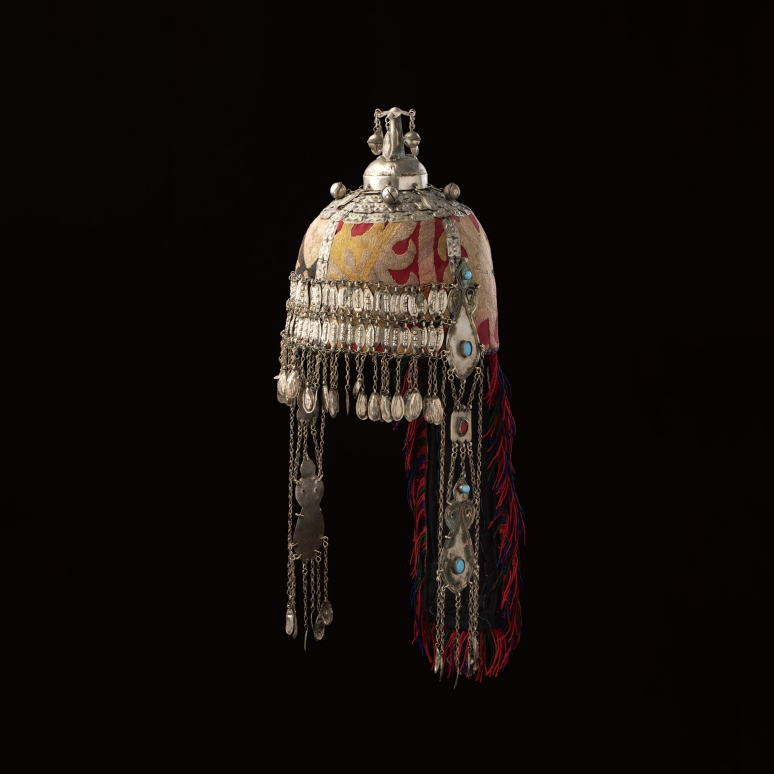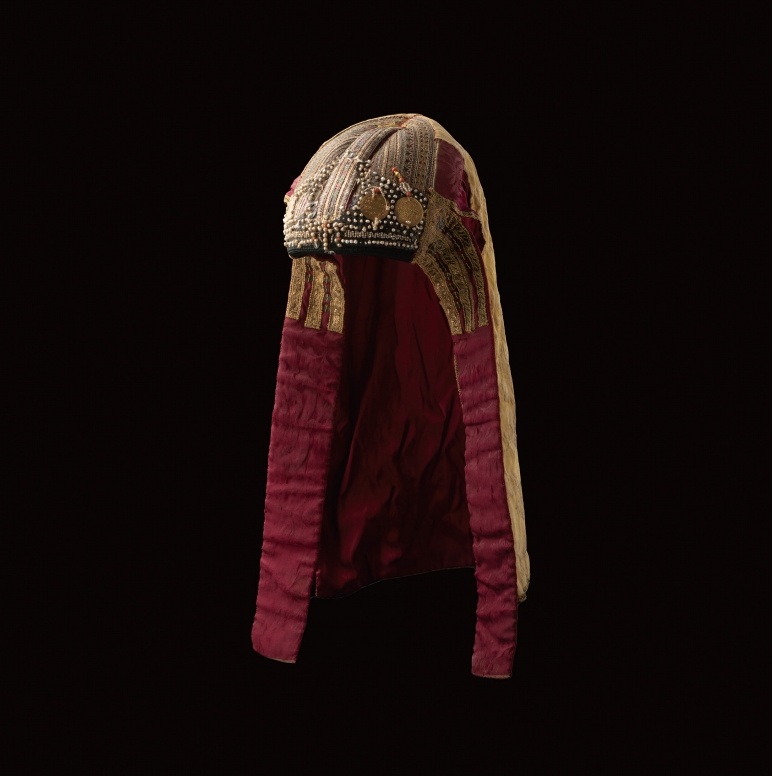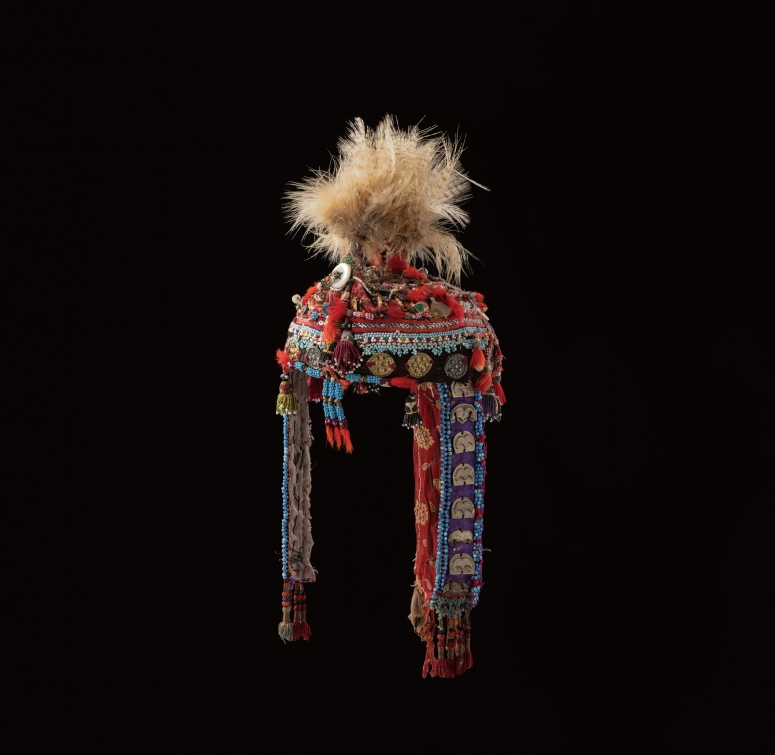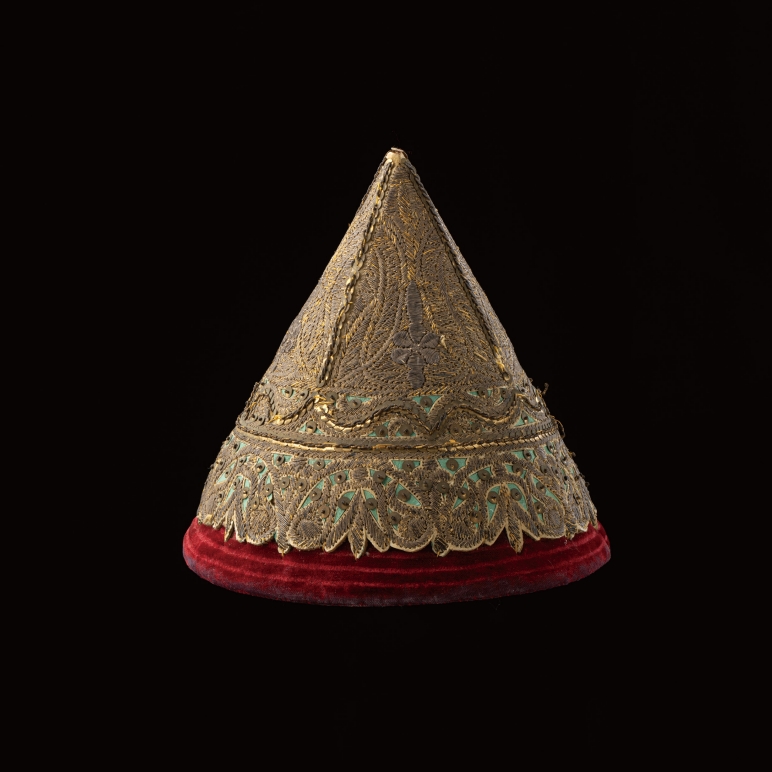Central Asia is known for its cultural diversity. Examples include: Tashkent, Uzbekistan: A vibrant city with a mix of Uzbek, Russian, Tajik, and Korean communities. Bishkek, Kyrgyzstan: Home to Kyrgyz, Russian, and Uzbek populations, creating a diverse urban atmosphere.
Arabic tribes and culture dominated much of the region over the next 3–4 centuries, establishing Islam as the main religion, and bringing what is described as a golden age of art, culture, and knowledge.
Many head coverings throughout history and around the world carry religious or ceremonial significance. Hats can convey social status or military rank, much like Napoléon Bonaparte's signature bicorne hat. This hat was one of many identical iterations made for the Emperor of the French.
For today’s article, we will try to talk about the importance of headwear in reflecting history, identity, and social norms, what are you waiting for, let’s dive in!!

In the English language, the word “head” refers not only to a part of the body, but can signify someone who is a leader or chief. More than other articles of clothing, headwear is worn to proclaim a person's status and authority.
Hats can reveal peoples' religious affiliations and confirm their faith in God or their belief in animistic spirits. They may be worn to scare off enemies and demons or to attract a mate. The shape, design, and decoration of the headwear may also convey one's state of life as well as social position, power, and wealth.
Also, the hat represents authority and power. Because it covers the head, the hat contains thought; therefore, if it is changed, an opinion is changed. The covered head shows nobility and different hats signify different orders within the social hierarchy. Removal of a hat upon entry into a building shows respect.
- Kazakhstan: The Shapan and Kalpak
Takiya - a skullcap worn by people of all ages in Kazakhstan. It is sewn from silk, velvet, and other materials. Among younger Kazakhs, “zer-takia”, an embroidered skullcap with gold or silver thread, is popular.
One of the meanings is “sacred”, or “pure”. The kayak's shape has not changed in centuries because this shape symbolizes the heights of surrounding mountains and the purity of the folk spirit. There are many varieties of kalpak.
The Ak (white) Kalpak is not just the national hat for men; it is a symbol of Kyrgyz culture so revered that it warrants its own holiday (March 5). The Kalpak's shape and color represent Kyrgyzstan's snow-capped mountains; its 4 panels represent the 4 cardinal directions and, some say, the 4 natural elements.
- Kyrgyzstan: The Ak Kalpak
Ak-kalpak craftsmanship is a traditional Kyrgyz handicraft. The Ak-kalpak is a traditional male hat made with white felt which bears deep sacral meanings. Ak-kalpak craftsmanship encompasses a cumulative body of knowledge and skills pertaining to felting, cutting and sewing, and pattern embroidery.
The Ak-kalpak’s shape resembles a snow peak, with the four sides resembling the four elements, and the edging lines symbolising life. Ak-kalpak fosters inclusivity and unites different Kyrgyz tribes and communities. Traditionally, related knowledge and skills are transmitted from mother to daughter in craftswomen communities.
- Uzbekistan: The Doppa
A Doppa is a skullcap worn by Uyghurs and other Turkic groups in Asia, such as Kazan Tatars, Tajiks, and Uzbeks. In fact, the word 'Doppa' stems from the Uzbek word for hat: 'doppi. '
Although the Doppa’s name might stem from the Uzbek language, Uyghur Doppas are different from those worn by Uzbeks. Uyghur Doppas are made differently and tend to have different shapes and colours. While Uzbek Doppas are square and firm with pointy edges, Uyghur Doppas are rounder and softer.
There’s a huge range of shapes, colors, and styles for Doppas – around 250 in total! Traditionally, they are to make just one Doppa!
- Turkmenistan: The Telpek and Takhyas
The telpek (Turkmen: telpek) is an item of headgear that is part of the traditional clothing of the Turkmen. It is widespread in Turkmenistan but is also popular with the Turkmen of Afghanistan and Iran. In Afghanistan in particular, it is also worn by the non-Turkmen population, such as the Pashtuns and the Persian-speaking population in the west of the country.
The basis of the talk is a cap made of soft leather. This is covered on the outside with sheepskin, the color varying between white, black, and dark brown depending on the type of sheepskin used. The tanning, preparation, and stitching of the sheepskin is a complex process that takes a few weeks in total.

What material is used to make hats? Well, it can be made of silk, cotton, or synthetic fibers. Hats, caps, berets, and scarves are made of velvet. Also used to accent and line hats. Chenille refers to the type of shortcut yarn used.
The items that you'll need include a range of needles, tailor's chalk, pins, quick unpick, pliers and wire cutters, drawing pins, machine sewing needles, and a selection of thread. Generally, anything that you commonly find in a sewing kit will be handy when it comes to millinery.
Why are hat makers called Milliners? Well, the word milliner comes from the word Milan. In the Middle Ages, the Italian city was the hub of the world's textile and fashion trade. Those making fashionable ladies' hats became associated with the city because of the materials they used.

Artisans face several challenges in preserving traditional crafts and products, such as:
Lack of Recognition: Traditional crafts and products are often undervalued and under-recognized. This lack of recognition can demotivate artisans, leading to a decline in the number of artisans giving up traditional crafts.
Lack of modernization: Usage of modern technology and techniques can improve the quality and productivity of traditional crafts. However, some traditional methods are resistant to change, making them less efficient than modern technology.
Competition from mass-produced items: Mass-produced items, which are often cheaper, can be challenging for traditional artisans. As the market is flooded with cheaper products, traditional artisans struggle to make a decent livelihood.
Poverty: Many artisans are living below the poverty line, with no access to basic amenities like electricity, healthcare, and education. Poverty affects the quality of life of artisans and their ability to preserve the craft.
By prioritizing its preservation through technology, community involvement, language preservation, celebrating traditional practices, empowering museums, documenting intangible heritage, conserving cultural landscapes, recognizing culinary heritage, implementing legal frameworks, promoting education and awareness.

Hats and headdresses can be full of meaning. They simultaneously announce our place in society and make statements about our individuality. A hat can identify which country a person comes from and to what cultural group he belongs. It might indicate how he makes his living or how he spends his free time.
Hats can reveal peoples’ religious affiliations and confirm their faith in God or their belief in animistic spirits. They may be worn to scare off enemies and demons or to attract a mate. The shape, design, and decoration of the headwear may also convey one’s state of life as well as social position, power, and wealth.
That’s all for today, if you have any questions, please comment below and let us know!!